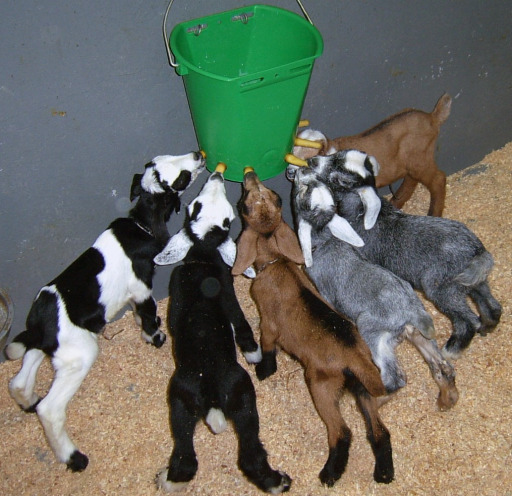Use of glycerol and propylene glycol to improve heat treatment of goat colostrum
Con este experimento se quería evaluar la idoneidad del glicerol y el propilenglicol para reducir el número de microorganismos presentes en el calostro tratado térmicamente y preservar sus propiedades inmunes.
The colostrum, beletén or belete in the Canary Islands, is the first secretion of the mammary gland of the mammals after the delivery. The composition of colostrum is very different from that of milk, as it contains high amounts of immunoglobulins (proteins of the immune system) and low amounts of lactose (the milk's own sugar). The newborns of cows, goats, sheep or other ruminants should eat enough colostrum during the first hours of life, since their mother transfers essential elements for the defense of the newborn, as well as other components that will help to operate their digestive system and immune system. However, just as colostrum provides essential nutrients, it can also contain pathogenic microorganisms that can cause disease in the offspring, which can then spread through the herd.
The aim of this experiment was to evaluate the suitability of glycerol and propylene glycol to reduce the number of microorganisms present in heat-treated colostrum and to preserve their immune properties. Colostrum samples from 11 goats were divided into 9 equal parts each. Different concentrations (2, 6, 10 and 14%; vol/vol) of glycerol or propylene glycol were added to each part. As a control, a PBS was added to one of the aliquots. After the respective additions, the colostrum samples were heat treated at 56°C for 1 h. After cooling, total mesophilic aerobic count was performed. Subsequently, different immune parameters were measured (IgG, IgA, IgM and chitotriosidase activity).
The addition of glycerol and propylene glycol was able to reduce the microbial load more effectively than the control, the most effective concentrations being 10 and 14. Regarding the immune components, these addictions did not affect IgG concentrations in any case. However, the addition of propylene glycol reduced IgA and IgM concentrations and the activity of chithothriosidase.
In conclusion, we can state that the addition of glycerol to goat colostrum before heat treatment is effective in improving the reduction of microbial load while respecting the immune components of the colostrum.
To learn more about this topic, see article “Use of glycerol and propylene glycol as additives in heat-treated goat colostrum” (Antonio Morales-delaNuez, Lorenzo Hernández-Castellano, Isabel Moreno-Indias, Davinia Sánchez-Macías, Anastasio Argüello, Noemí Castro, 2020, Journal of Dairy Sciences, 103:2756-2761).
By Antonio Morales de la Nuez
*Acknowledgements: The authors would like to acknowledge the support provided by the Ministry of Science and Innovation in the form of a grant, AGL2009-11944. Antonio Morales de la Nuez acknowledges the financial support of the Programa de Formación el Profesorado Universitario (FPU). Likewise, this author is currently funded by the Cabildo de Tenerife, under the identification mark "Tenerife 2030" ("TF INNOVA 2016-2021 Program") with funds from the Strategic Framework for Island Development (MEDI) and the Canary Islands Development Fund (FDCAN). The authors would also like to thank Guido Vaughan Jones (IPNA-CSIC, Tenerife, Spain) for editing the manuscript in English.
